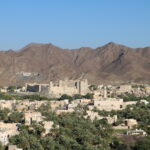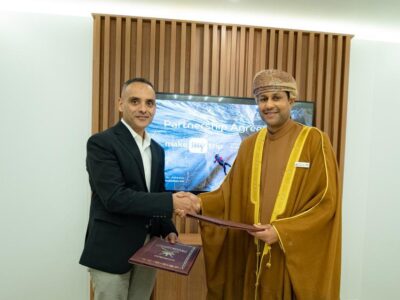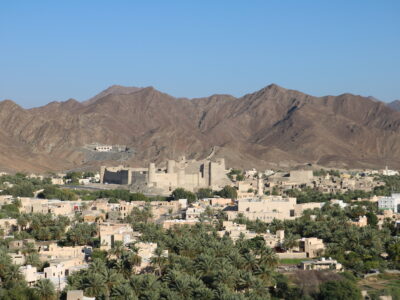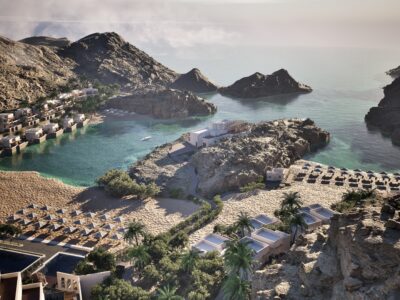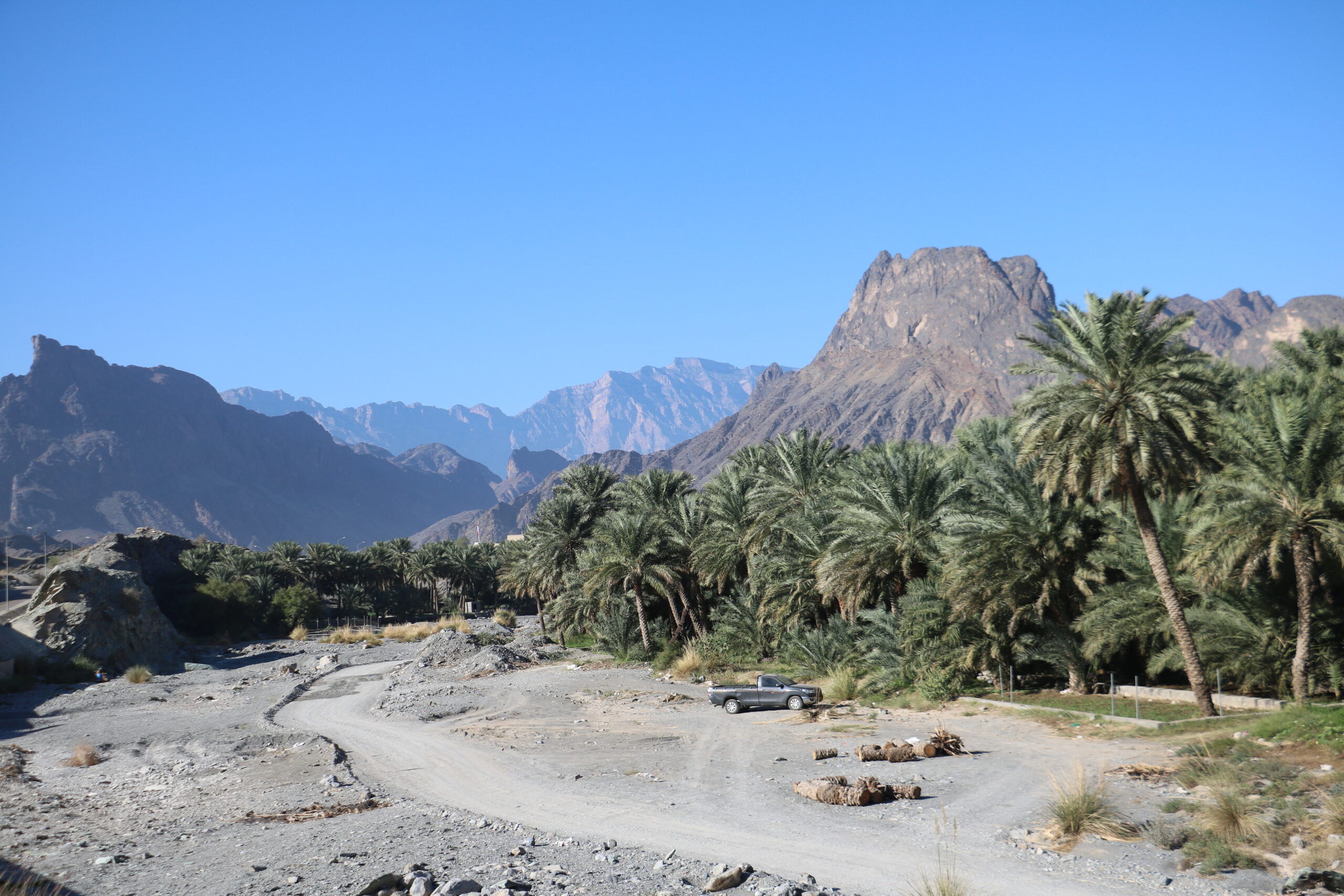
Oman's varied landscapes make for an interesting exploration (Photos: India Outbound/ Varsha Singh)
It had sounded much easier than what it actually turned out to be. “Be careful. Stay in the middle, walk slowly and place one foot ahead of the other,’’ our guide had warned. Here, I was, following his instructions to a tee, but that did not make it any easier!
Taking slow steps, literally one at a time, keeping my eyes glued to the narrowest of pathways that I had ever trod, I kept all other thoughts, especially of looking around me, out of my head, focusing just on the crucial task of placing my foot properly. Walking on that narrow ledge, I could very well feel exactly how an acrobat may feel while performing a tightrope walk in a circus.
I was in the Al Hajar Mountains of Oman on a visit organised by the Ministry of Heritage and Tourism for some Indian journalists to discover the country and its multiple facets. After a day and half of a relatively easy itinerary that mainly involved visiting Muscat and its many splendours, we had now ventured to the tough, mountainous terrain, situated about 150 km southwest of the capital and which is one of the star tourist attractions of the Gulf country.
Though I had heard that Oman was the greenest of the Gulf nations, but the sheer diversity of landscapes that this country, which is relatively small in size, was a big and pleasant surprise. My discovery of the country began with a couple of days in the capital, Muscat, which combines modernity with tradition, but more on that another time.
Having left Muscat for the famed highlands, our first stop was the 18th century Al Hazm Castle, built by the Al Yarubi rulers of Oman, who are credited with having liberated the country from occupation by the Portuguese, who had ruled over the country for about 150 years.
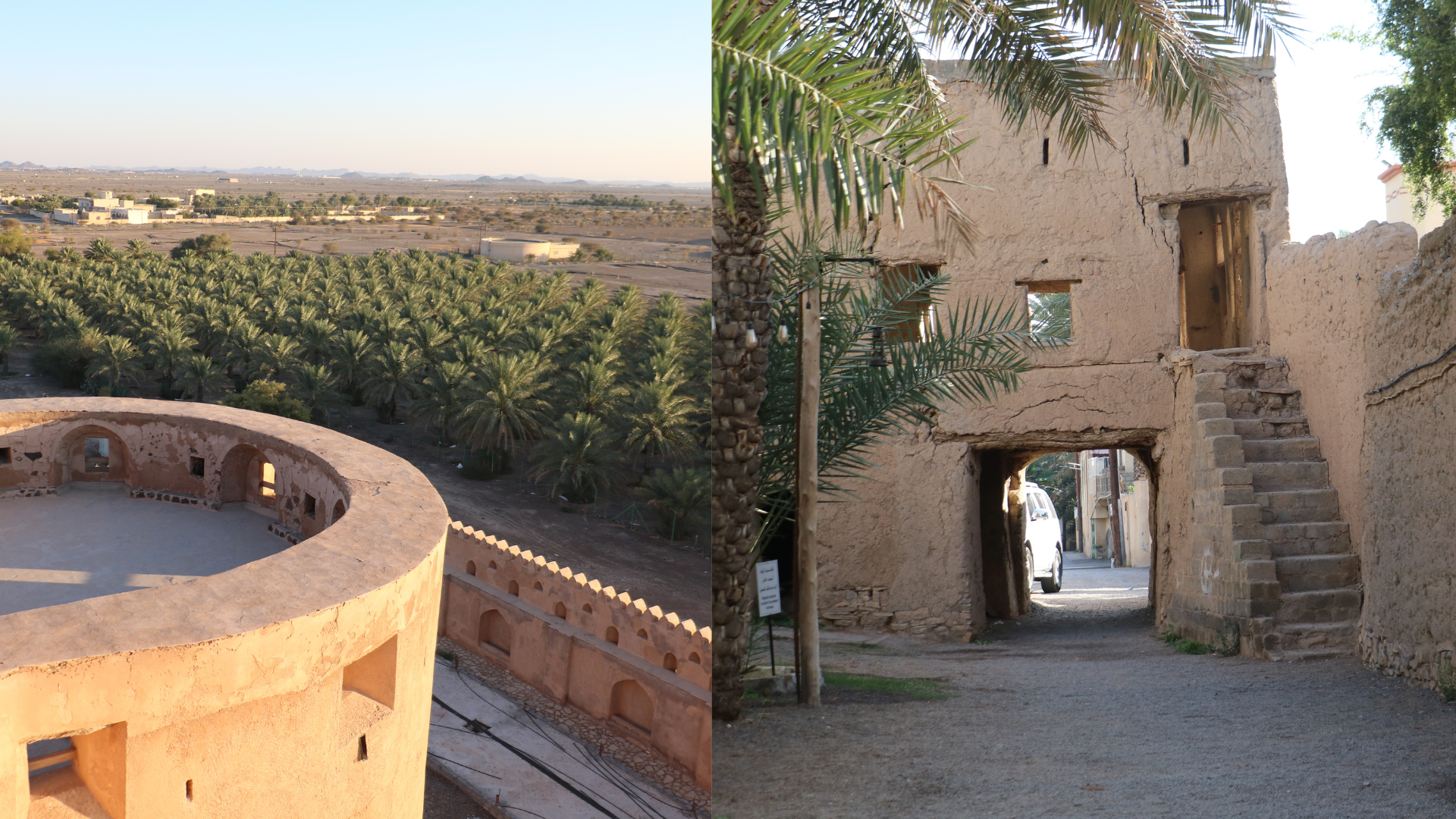
Oman is rich in heritage sites such as Al Hazm Castle (L) and also some ancient villages (R)
Castles & forts aplenty
The Castle is not only technologically more advanced, with a stronger structure in order to be better defended against attacks, but also well-embellished and decorated since it also served as a royal palace used occasionally by the Sultan to stay. Its historical and architectural importance becomes even more apparent as Al Hazm Castle is on the tentative list of UNESCO World Heritage Sites, along with the neighbouring Rustaq Fort.
Situated on the western bank of Wadi Far, Al Hazm Castle is surrounded by palm tree gardens. It is a rectangular two-storied construction, with two giant cylindrical cannon towers on the corners of the castle. One of the most attractive features visible as you enter the castle is the large, wooden door embellished by engravings, pretty much like the olden-day doors in Indian palaces.
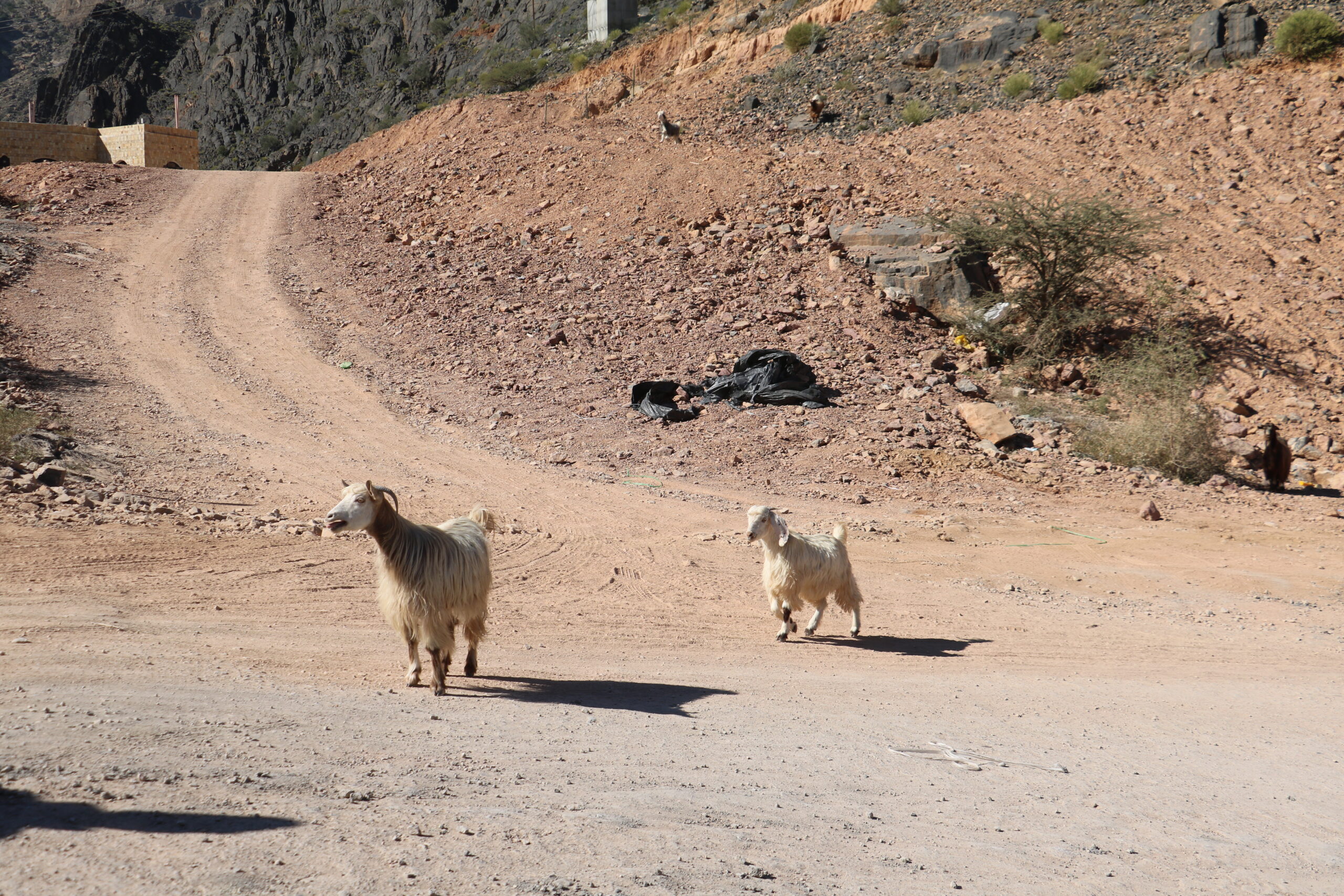
Terrain in the area is rough and ideal for hikes or 4×4 drives
With numerous other engravings and beautiful architecture, the Al Hazm Castle is a very appealing structure. Recently, it was extensively restored by the Ministry of Heritage and Tourism, says Nasser Al Muqimi, our well-informed guide who took pains to delve deep into history of the country and its monuments. After visiting the Castle, we continued towards our destination, Wakan, a heritage village, about 100 km south of Al Hazm. As we drove, I could easily see the changing landscape, with the ground becoming drier, rockier and higher as we approached the hills. Enroute, we come across some amazing sights, notably the picturesque valley of Wadi Al Abyadh, that is dominated by a stream and water pools, scattered around and clumps of date palm trees and other plants providing ideal spots for picnics or just for being outdoors.
Since we did not have much time to explore, we continued our journey after a brief halt for admiring the raw beauty of the terrain, dominated by gravel and rocks.

The villages and habitations here often stand on sheer rock cliffs with narrow pathways carved through them
Wakan Heritage Village
After driving for another 40 minutes, we reached our destination for the day, Wakan, a heritage village at an altitude of about 2,000 m. After a fulfilling lunch and checking into our hotel, Sama Wakan Heritage Home, we went out on our first hike, to explore the village and its surroundings, which boast of several small hiking tracks, that are well-marked out so that even newcomers find their way about.
Wakan is a picturesque little retreat, with terraced farms growing various vegetables, flowers and fruits, notably pomegranates, apricots and grapes as agriculture is the main source of livelihood in the area. While some tracks are properly developed with well laid-out steps, complete with resting points and view points, while others, notably a hiking trail that goes all the way to Al Jabal Al Akhdar, one of the highest mountains in the Arabian peninsula.
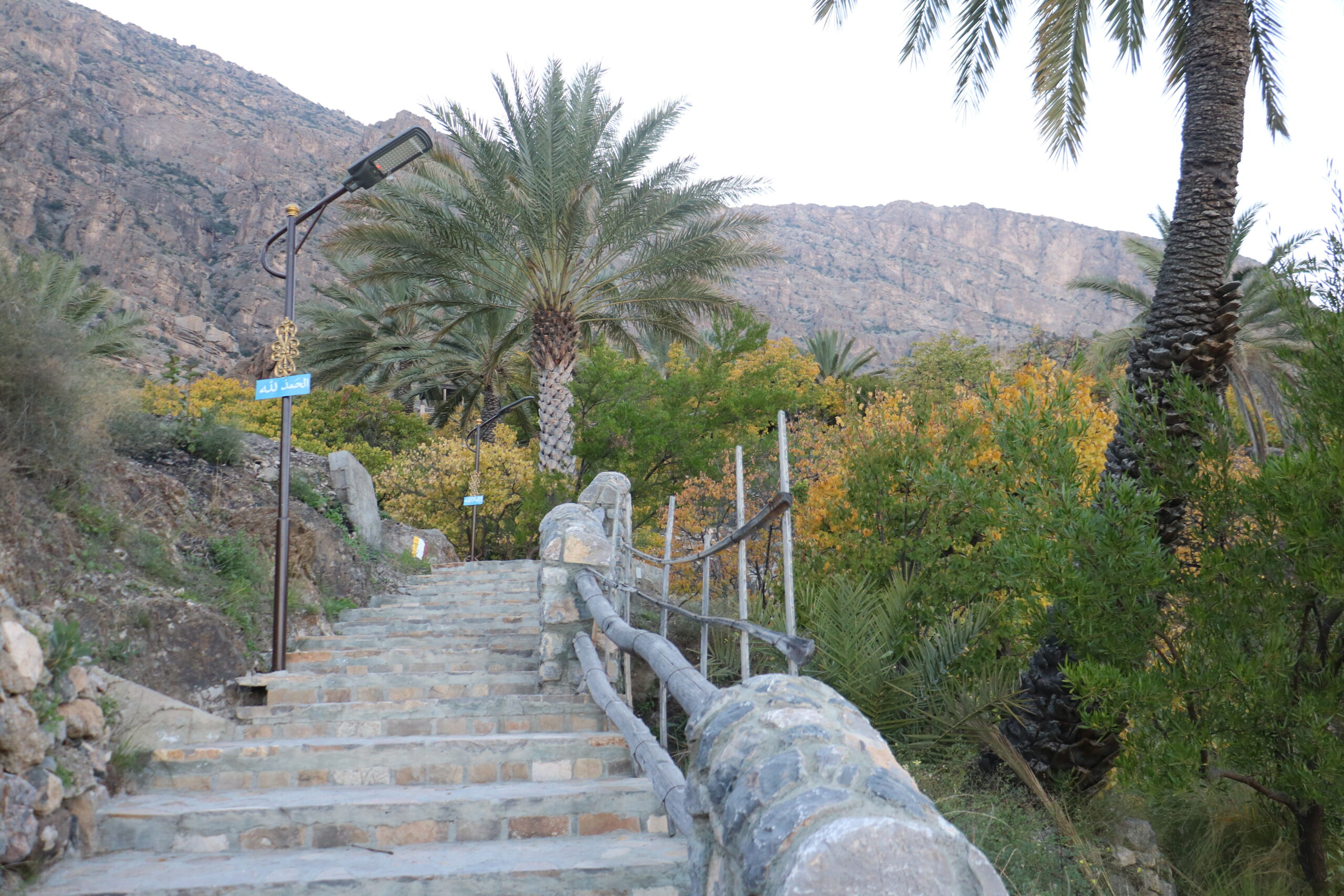
The surroundings in Wakan boast of several small hiking trails, that are well-marked out for newcomers
After a pleasant walk-cum-exploration, we returned our hotel for dinner. Sama Wakan Heritage Home is a uniquely designed property that merges so perfectly well with its surroundings that it seems to have been around ever since the Hajar Mountains. As we had long day of exploration and hikes ahead, we all called it a day soon after the dinner.
After an early breakfast, we set out for what promised to be the most exciting day or should I say most adventurous day on the trip as we were headed to Al Jabal Al Akhdar, the second highest elevation in Oman, just marginally short of the neighbouring Jebel Shams mountain.
A hike here is a memorable activity as one can explore the largely arid landscape and the numerous hills that are around. On our way to Jabal Akhdar, we made the obligatory stopover at Snake Canyon, an impressive gorge in the Wadi Ban Awf, one of the largest and most touristic valleys in the country.
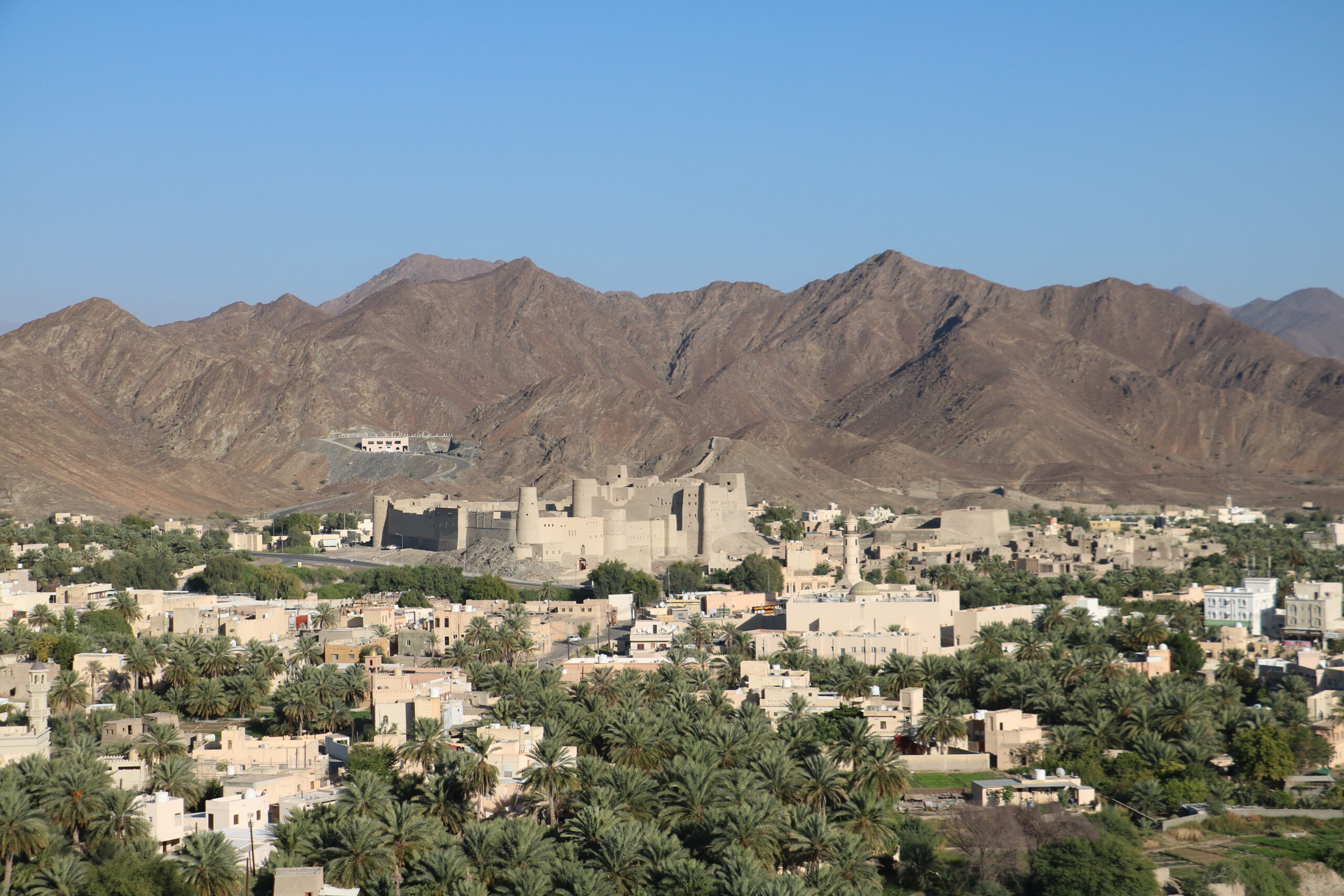
Numerous oases are sprinkled in the foothills of the mountain range
Nature’s themepark: Snake Canyon
The valley itself and the Snake Canyon have been christened as Oman’s largest water themepark as it offers dozens of amazing experiences where one can either jump off small cliffs or large rocks into numerous water pools that have been formed here. While some pools are deep, many others are shallow enough through which one can easily wade. There are also numerous natural waterslides here that can be as thrilling as those in any man-made waterparks.
In many ways, physical and metaphorical, the visit to Snake Canyon was an eye opener for me and others travelling with me. Though I am not at all short by any standards, standing in the middle of canyon, alongside the huge boulders that towered above me, I was left wondering about how relative the terms big or small are when the dimensions of us mere mortals are measured against those of Mother Nature.
The canyon is very popular among hikers especially during spring or summer thanks to the water pools that are ideal for a swim to cool off. Our guide warns us that the terrain is tricky as the Snake Canyon is highly prone to flash floods during the rains. But its beauty is no lesser without water and offers perfect spot for light to medium hiking experiences.
Moving from the canyon, we continue our journey and the next stop, though barely 45 km away, was in such a sharp contrast to the terrain of the canyon that we were left astounded. We had reached Misfat Al Abriyeen, an oasis village and a haven of greenery in this rough terrain.
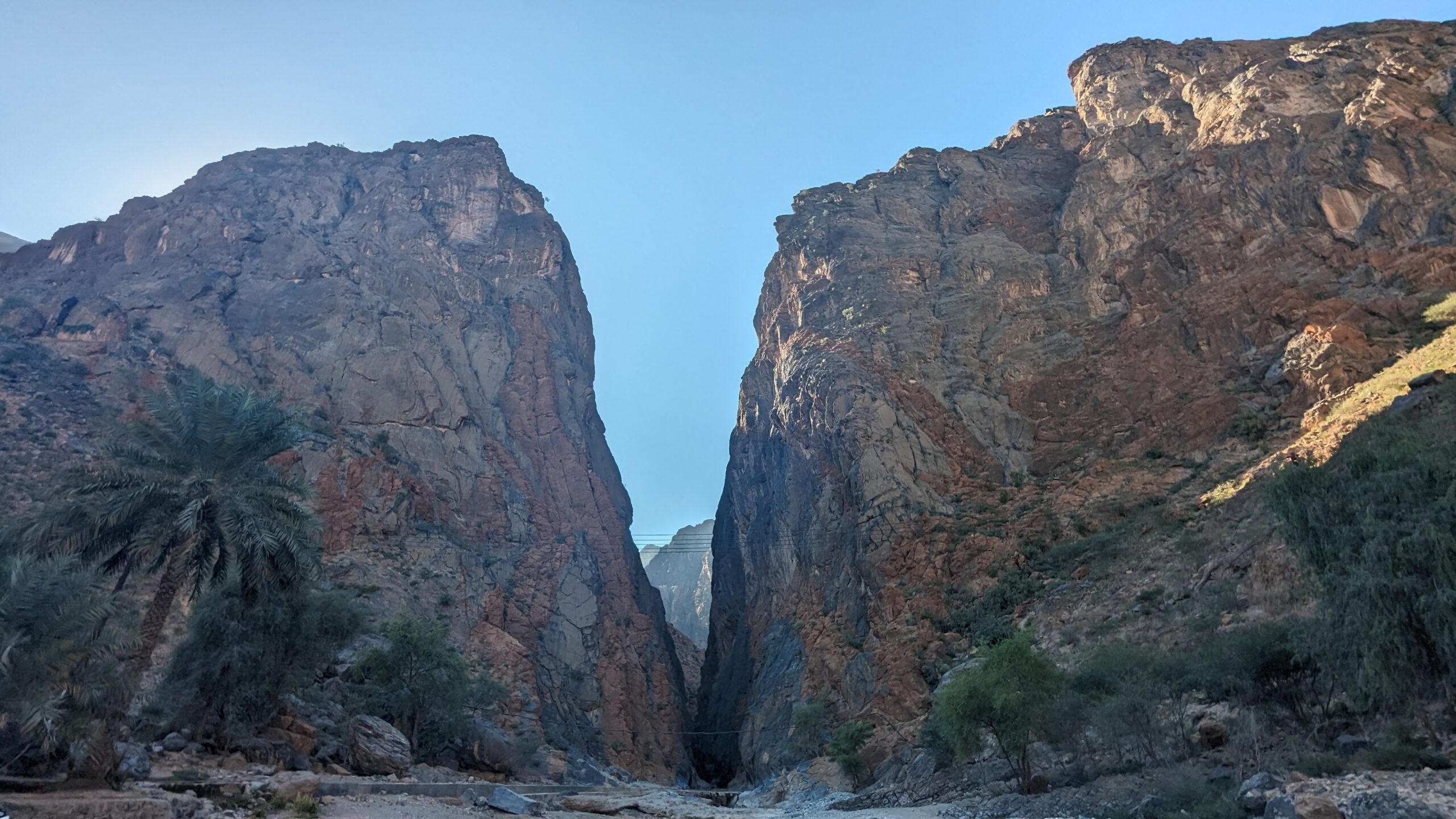
Snake Canyon is often referred to as the Grand Canyon the Middle East
Lush greenery in the desert
The tiny village is surrounded by the oasis with hundreds of date palm trees and other vegetation. In 2021, the village was recognised by the United Nations World Tourism Organisation (UNWTO) as one of the 50 Best Tourism Villages in the world.
Our guide tells us that the village, known for both its traditional architecture and agriculture, has been a self sustaining cohesive community based on the ancient falaj irrigation systems for at least 2,000 years and this was the basis for the recognition that it won from UNWTO.
The Omani government is now working to restore Misfat as a fully functioning, self-sufficient and networked rural unit that also plays its important role in the creation of a sustainable future for the country as part of the ‘Oman Vision 2040’ drive of the government.
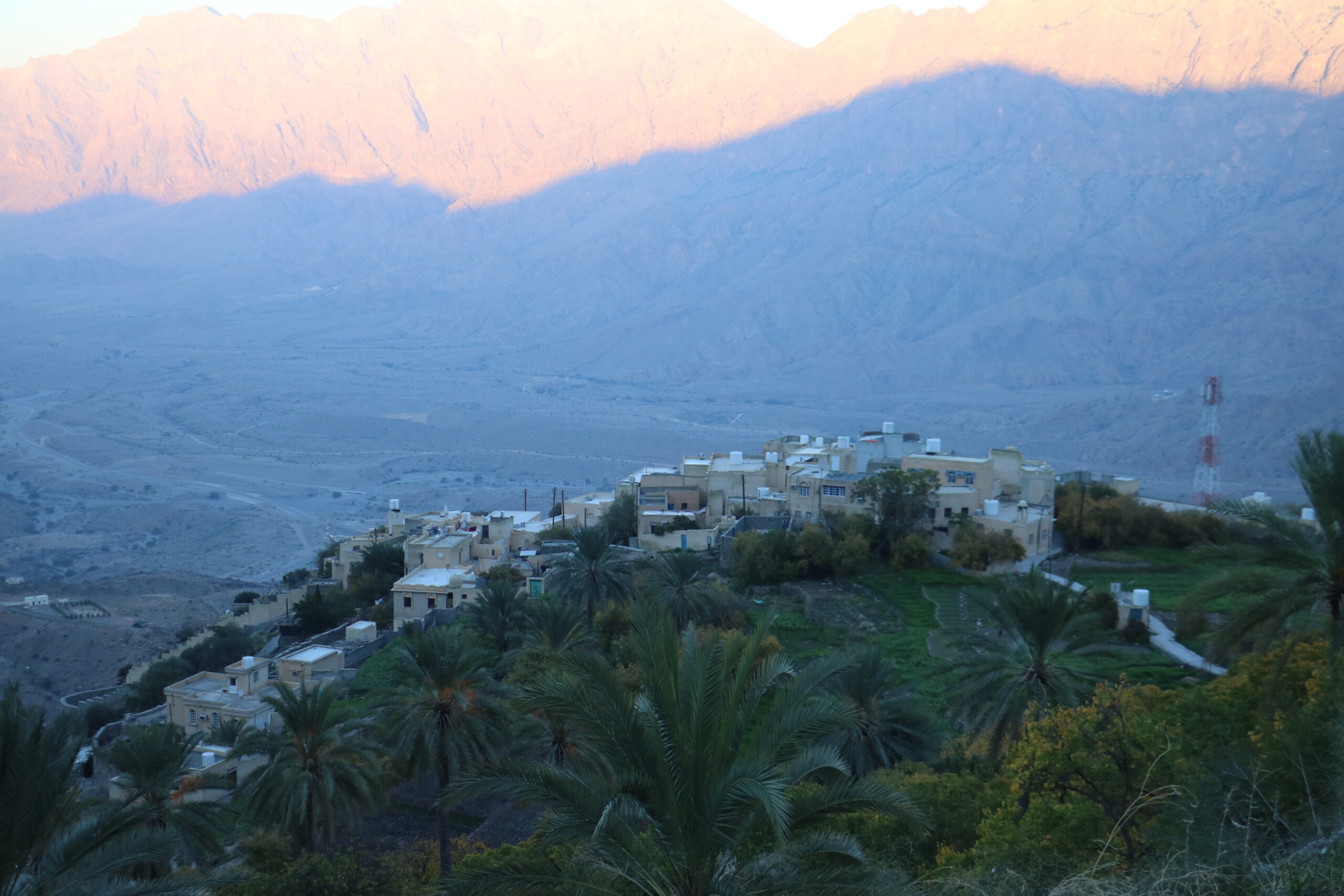
The tiny Misfat Al Abriyeen village is surrounded by an oasis with hundreds of date palm trees and other vegetation
A walk in the greenery of the oasis reminded me of my numerous trails in places a forest as the sunrays fought, mostly unsuccessfully, to penetrate the green canopy that had spread over our heads, making that mid-day walk a thoroughly pleasurable experience.
From Misfat we recommence our exploration and head towards Jabreen Castle. Enroute we stop to admire another UNESCO World Heritage Site, Bahla Fort. The Fort dates back to the mediaeval Islamic era and was extensively restored in 2012 and is a must visit in the area around Al Jabal Al Akdhar. After admiring the Fort and its surroundings, we head to Jabreen Castle.
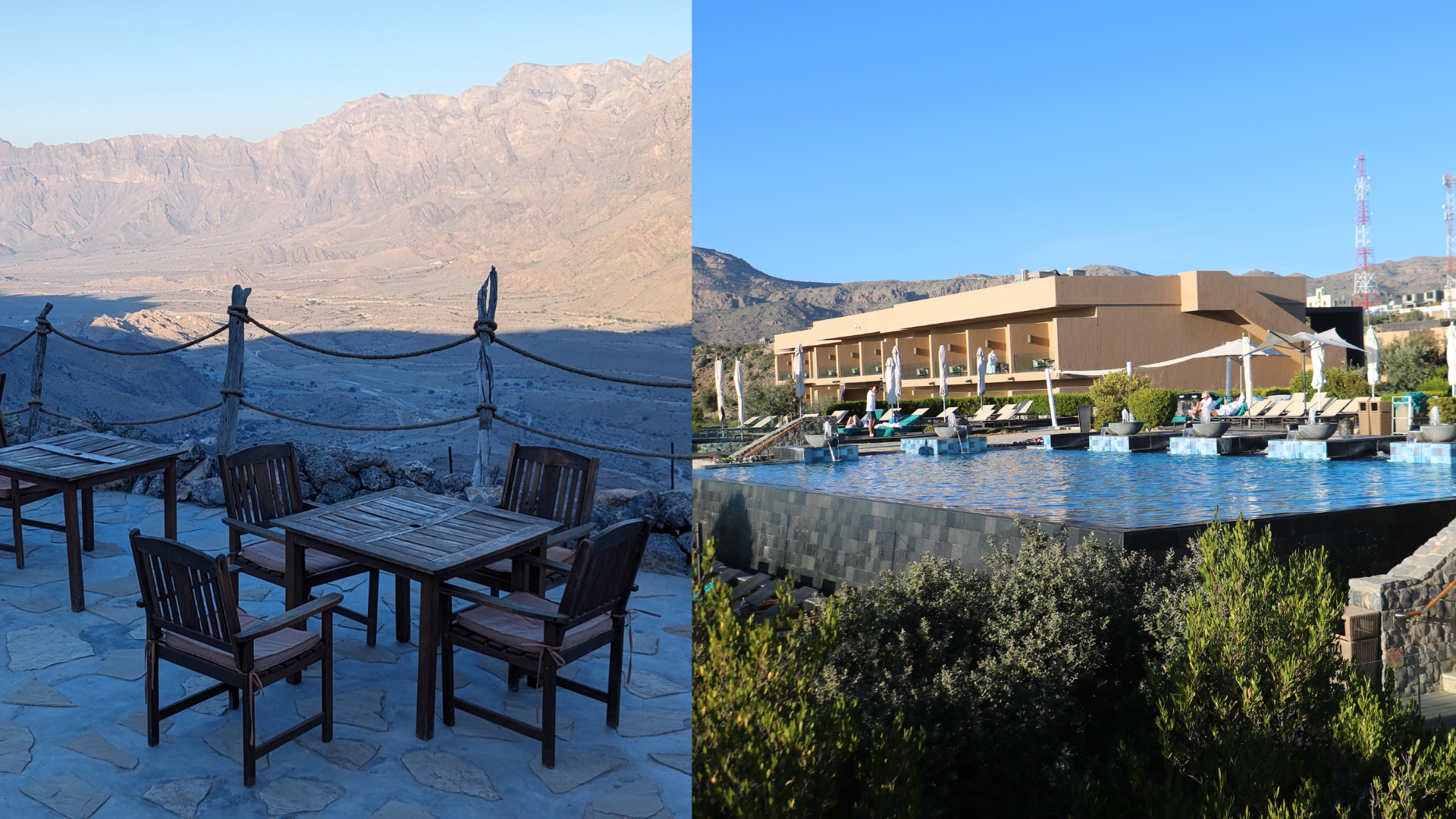
The luxurious offerings of Anantara Jebel Akhdar were nothing short of any of the modern comforts that one has come to associate with a top-class hotel brand
Built in 1675, the battlements of this fort are extremely well preserved and make for a great site for exploration. By the time we finish our visit of Jabreen Fort, it is already dusk and we are tired and hungry.
So thankfully the next stop and the final one for the day was Anantara Jebel Akdhar. The luxurious offerings of this hotel were enough to drive away any sense of tiredness that we may have had from the day. The luxury hotel has been designed in such an ergonomic manner that it melds perfectly well with the ambience of the area.
After a quick freshening up, we reassemble for our dinner, under the stars. Though Christmas was still a fortnight away, the hotel had already been decked up for the festivities, with bright lightings set up all over.
My room at Anantara was extremely spacious and very tastefully prepared, with a large and inviting bed dominating the room, which lacked nothing of modern comforts that one has come to associate with a top-class hotel brand. Besides the bed, a carved wooden drawer, with metallic engravings on the sides was the other big piece of furniture in the room.
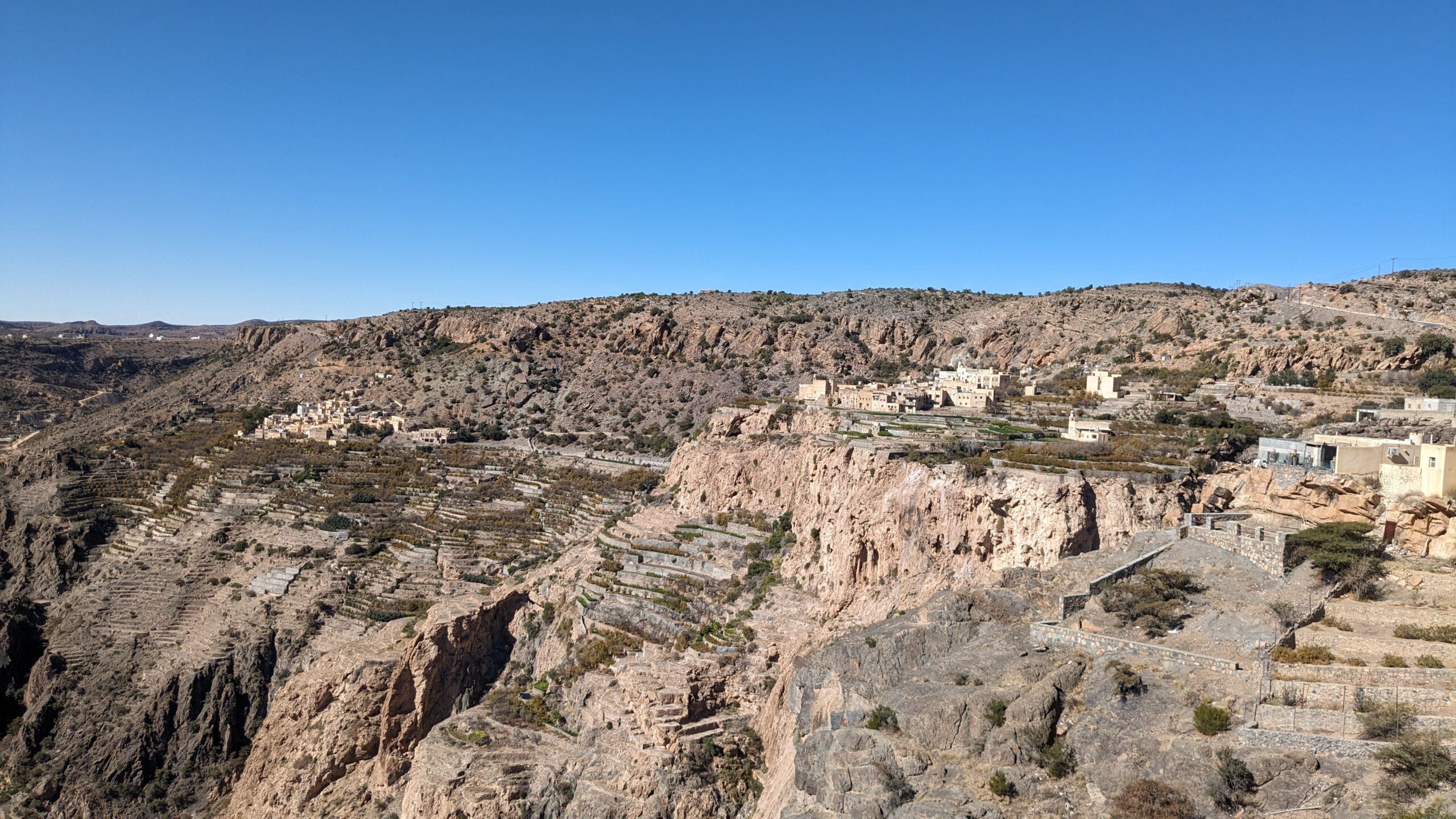
Despite the rocky cliffs all around, the locals have developed farming extensively around Jabal Akhdar
Hikes and treks in Jabal Akhdar
The next morning, after a hearty breakfast, we went on our trek, discovering a few villages in the vicinity of the Jabal Al Akhdar mountain.
Despite the rocky cliffs all around us, the locals have developed farming extensively, carving out terrace gardens or farms in places where the top soil is evidently fertile enough to support a wide variety of fruits, mainly pomegranates, and vegetables.
The villages were tiny and in each a few homes, probably a dozen or two, built entirely of stones commonly found in the area, clinging to the sides of the cliffs. Looking at the way they seemed to be hanging on the edge made me wonder how the locals managed to move about when it rained.
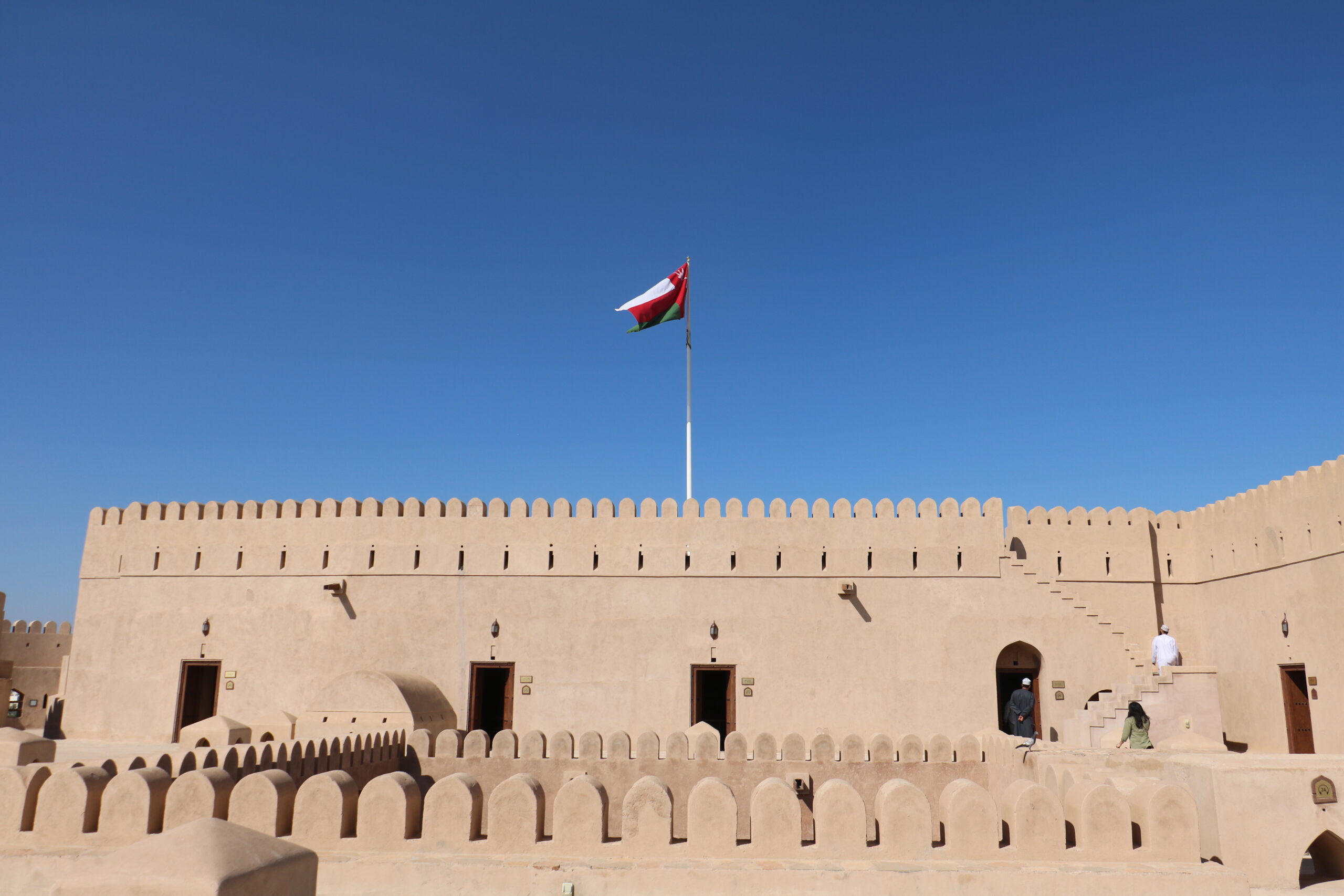
Built in 1675, the battlements of this Jabreen Fort are extremely well preserved and make for a great site for exploration
Though some of the villages here are still inhabited, some others have been abandoned, due to various factors, notably lack of water and even safety of the terrain due to climatic conditions. But walking through these abandoned villages does not give the feel that they are abandoned as most of the houses stand in almost perfect condition and the streets are neat and clean.
But Nasser told us that these villages had been abandoned and were mainly used as tourism sites. He added that on Fridays, even these villages came alive as the weekly markets or souqs were held here from the sunrise through to late nights and people from neighbouring villages gathered here to buy or sell a variety of merchandise.
Exploring the inhabited villages, where locals were busy farming, we get to interact with some, leaving us impressed by the way they had managed to build their rather comfortable lives in this harsh terrain.
With so much time spent in the wondrous backdrops of Omani outdoors and its varied natural landscape, as we packed up and headed away from the mountains to our next destination on the trip, I realised that Oman’s nature and people had begun to grow on me. The warmth of our hosts’ smiles and combined with the sheer beauty of the country had begun to play its magic on me.
And that is another story, to be kept for another occasion.








